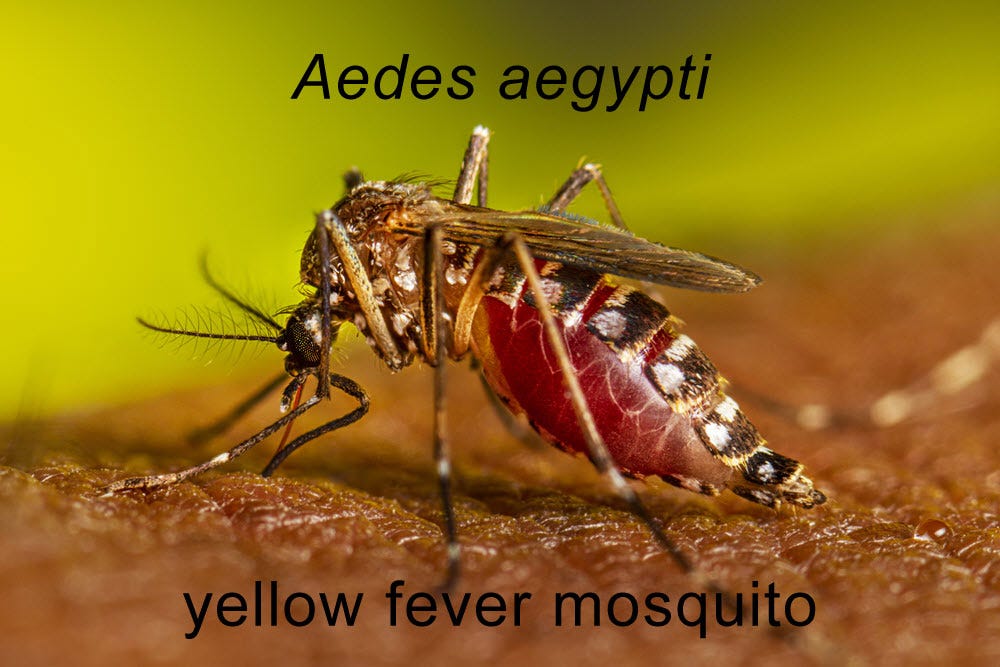Hawai‘i’s Hidden Plan to Release Mosquitoes for Public Health
The real agenda that the state isn't talking about
The State of Hawai‘i and its multi-agency partnership Birds, Not Mosquitoes have saturated the media this past year with propaganda about their plan to combat avian malaria by releasing billions of bacteria-infected mosquitoes on our fragile island ecosystems for at least the next twenty years. These mosquitoes pose numerous serious risks to our environment, wildlife, and human health, and they actually have the potential to cause the extinction of the endangered native honeycreeper birds the project claims to protect. In the face of overwhelming opposition from the people of these islands, and despite our active case in environmental court to stop the releases until the safety of the plan has been thoroughly studied, these agencies have already started unleashing this dangerous experiment on East Maui. They’re in the process of targeting Kaua‘i next.
What hasn’t been shared with the public are the details of a parallel program being run through the Hawai‘i Department of Health (HDOH), agency partners in the avian malaria project. The HDOH is getting ready to release their own lab-altered mosquitoes throughout the islands, a project that, so far, has been shrouded in secrecy.
What we know at this point is that along with the southern house mosquitoes being brought in for the avian malaria program, two more species are planned for import into Hawai‘i – Aedes aegypti and Aedes albopictus. On June 28, 2022, the Hawai‘i Board of Agriculture approved the addition of all three mosquito species to the list of restricted animals for research and exhibition.
According to agency partners University of Hawai‘i and U.S. Geological Survey’s Technical Report HCSU-103 from April, 2022, the Hawai‘i Department of Land and Natural Resources (DLNR) and HDOH submitted their joint import application for immediate field release.
The report also explains that the HDOH is drafting a statewide environmental assessment (EA) targeting all islands for release of these additional lab-altered mosquito species.
The environmental assessment for the avian malaria program confirms that approvals are already in place for the state to release these Aedes mosquitoes on the ground using cars, trucks, or ATVs. The intent is to focus this approach on mosquitoes of “public health concern.” Again, we have no information at all about the specific details of this separate project geared towards mosquito-borne illnesses that affect humans.
Like the southern house mosquitoes, these Aedes species will be infected in the lab with a bacteria called Wolbachia. According to the World Mosquito Program, ground releases of mosquitoes might look something like this:
“Adult releases
Wolbachia-carrying mosquitoes bred in the lab are reared, packed tight into tiny boxes, shipped to their new home and released by local field teams. Our deployment teams might drive a car or motorbike around sections of the neighbourhood and set a certain number free at specific intervals. Or they might even do it on foot in hard to access areas.
This is how it all began and is still a method used in some of our sites. But logistically it’s not always as efficient as rearing eggs in the release areas.”
“Egg releases
Eggs of Wolbachia-infected mosquitoes are bred in labs then shipped to their new home where they are reared in ‘mozzie boxes’ and distributed around the community – either in approved public places or outside people’s homes. Staff and local community volunteers simply add water and the supplied egg and food capsule to the mozzie box. The eggs hatch and 1-2 weeks later the adult mosquitoes emerge from the box into the wild to do their thing.”
Both Aedes aegypti and Aedes albopictus transmit dengue fever, chikungunya, and Zika virus, and the Aedes aegypti transmit yellow fever. Presumably, one or more of these diseases are the focus of the Department of Health. We’ll have to wait for the state to publish their EA before finding out if their plan has sufficient biosecurity protocols, pathogen screenings, mitigation measures, and safety studies. All of these areas are lacking in the avian malaria EA, so there’s already cause for concern.
It’s also unclear if the state intends to mass produce these additional mosquito species in their Hawai‘i DLNR lab insectary. There appears to be a hidden agenda motivating the state’s push to bring lab-altered mosquitoes onto the islands. The experimental avian malaria plan using lab-infected southern house mosquitoes for conservation purposes is a trojan horse for advancing an endless cash cow of biotech research and development, and the Aedes mosquitoes geared towards human health would be the next phase of this agenda.
Hawai‘i Unites has taken the state to court to challenge the first phase of their mosquito plan, the multi-agency project to release billions of lab-infected southern house mosquitoes on 64,666 acres of East Maui’s natural reserve, watershed, and conservation area. These releases have already begun. We need your help to put a stop to this escalating scheme to bring dangerous lab-altered mosquitoes onto the islands into perpetuity. Future goals of these agencies include gene drives, CRISPR technology, and synthetic biology control tools. This irreversible desecration of our fragile environment through biotech commercialization is not in the best interest of Hawai‘i’s native birds, the ‘āina, or the health of the people and wildlife.
Please consider making a tax-deductible donation to our organization so that we can continue to move our legal case forward and set a precedent to protect the islands from this threat of never-ending biotech mosquito releases.
Mahalo,
Tina Lia
Founder
Hawai‘i Unites
HawaiiUnites.org
Hawai‘i Unites is a 501(c)(3) nonprofit organization dedicated to the conservation and protection of our environment and natural resources.









